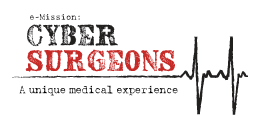The Urinary System
Student Pages
 The excretory system is responsible for eliminating the waste products produced by metabolic functions in the body. It is absolutely essential to good health that these waste products do not build up in the tissues or blood where they act as toxins to efficient cellular activities.
The excretory system is responsible for eliminating the waste products produced by metabolic functions in the body. It is absolutely essential to good health that these waste products do not build up in the tissues or blood where they act as toxins to efficient cellular activities.
Several different organs and tissues have excretory functions. The large intestine absorbs water and eliminates solid digestive waste products from the body. The skin eliminates other metabolic wastes in the form of perspiration and the lungs excrete CO2 from the body. These components have been discussed in the body system sections that deal more directly with those organs: the large intestine in the digestive system and the lungs in the respiratory system.
This section focuses on the part of the excretory system that involves the elimination of liquid wastes and maintenance of the fluid balance in the body, the urinary system.
Structure of the Urinary System
The urinary system is made up of two kidneys, two ureters, the urinary bladder, and the urethra.
Kidneys
The kidneys are reddish-brown, bean-shaped organs lying on either side of the spinal column. They lie high on the posterior wall of the abdominal cavity and are approximately 12 centimeters long, 6 centimeters wide, and 3 centimeters thick.
The kidneys filter metabolic wastes from the blood, combine the wastes with excess water, and produce urine. The functional unit of the kidney is the nephron. Nephrons act as filters; as blood flows through the nephrons, wastes are absorbed and concentrated within capsules. (Movement of fluids, concentration of wastes and electrolytes, and reabsorption of materials occurs by active and passive transport mechanisms.)
Urine composition can vary considerably, but generally reflects the amount of water and wastes that the kidneys must eliminate from the body or retain to maintain homeostasis. Variations can occur because of diet, liquid intake, and physical activity.
It usually consists of approximately 95% water, urea, and uric acid. It also contains various electrolytes and amino acids. Urine is usually a light yellow, clear liquid. The volume of urine produced each day is usually between .06 liters and 2.3 liters, depending on fluid intake, environmental temperature and humidity, and the person’s respiration rate and physical condition.
It is NOT usually normal to have glucose (sugar), proteins, hemoglobin, ketones, or blood cells in the urine. The presence of these substances in the urine could, however, be explained by other circumstances. For instance, glucose could be present after consuming a meal high in carbohydrates. Proteins may appear after vigorous physical exercise and ketones may appear after a person is on a high protein diet for several weeks.
After urine is formed in the nephrons of each kidney, it passes through tube-like structures called ureters which lead to the urinary bladder.
A ureter is about 25 centimeters long and has muscular walls. Peristalsis in the ureter moves the urine along the tube to the urinary bladder. A flap-like fold of tissue acts like a valve. Urine can move into the bladder, but not back up into the ureter.
The urinary bladder is a hollow muscular sac that stores urine until release from the body when it forces it into the urethra.
The urethra is a tube that carries urine from the urinary bladder to the outside of the body.
Because the pathways of the urinary system are continuous, bacteria present in one part may travel to another. Bacteria in the urethra for example, may travel up to the bladder (cystitis), and if not treated, can travel to the kidney. Symptoms include painful and/or frequent urination and are treated with antibiotics.
Check for understanding:
- Describe the function of each part of the urinary system.
- What prevents urine from backing up into the ureters and kidneys from the urinary bladder?
- How might urine be used as a diagnostic tool?





